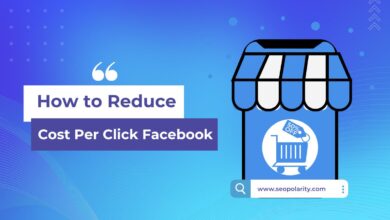
The digital marketplace is highly competitive. Getting a potential customer to visit your website is just the first step. Often, visitors leave without buying or acting. This results in lost chances. This is where retargeting ads come into play. Retargeting, also known as remarketing, is a powerful strategy. It brings back visitors. They interacted with your website and didn’t finish their purchase. Here’s a guide on using retargeting ads well. They re-engage visitors and boost sales.
1. Understand the Basics of Retargeting
Retargeting is online advertising. It targets users who visited your website but did not convert. These ads are shown to these visitors. They see them as they browse other websites, social media, or search engines. The goal is to remind them of your products or services. It should encourage them to return to your site and take the action you want.
There are two main types of retargeting:
- Pixel-Based Retargeting: This involves placing a small piece of code, known as a pixel, on your website. When a visitor lands on your site, the pixel drops a browser cookie that tracks their activity. This allows you to serve targeted ads to these visitors as they navigate other websites.
- List-Based Retargeting: This method uses your existing customer list, typically email addresses, to target users. When these users log into platforms like Facebook or Google, you can serve them personalized ads based on their email address.
2. Set Clear Goals and Objectives
Before you start a retargeting campaign, you must set your goals. What do you hope to achieve with your retargeting efforts? Common objectives include:
- Increasing conversions (sales, sign-ups, downloads)
- Reducing cart abandonment
- Boosting brand awareness and recall
- Upselling or cross-selling products
Clear goals will guide your retargeting strategy. They will also help you measure its success.
3. Segment Your Audience
Not all visitors are the same. A one-size-fits-all approach to retargeting won’t get the best results. Segment your audience based on their behavior and interactions with your website. Common segmentation criteria include:
- Page Visits: Target visitors based on the specific pages they visited (e.g., product pages, blog posts, pricing pages).
- Time Spent on Site: Segment users who spent a significant amount of time on your site but didn’t convert.
- Cart Abandonment: Focus on visitors who added items to their cart but didn’t complete the purchase.
- Previous Purchasers: Target customers who have made a purchase in the past for upselling or cross-selling opportunities.
Segment your audience. This way, you can make ads that are more personal and relevant. They will resonate with each group’s interests and needs.
4. Craft Compelling Ad Creative
The success of your retargeting campaign depends heavily on your ad’s quality. Here are some tips to create compelling retargeting ads:
- Visual Appeal: Use high-quality images or videos that capture attention. Ensure your visuals are consistent with your brand identity.
- Clear Value Proposition: Highlight the unique benefits and features of your products or services. Make it clear why visitors should return to your site.
- Strong Call-to-Action (CTA): Include a clear and compelling CTA that tells users exactly what you want them to do (e.g., “Shop Now,” “Get 20% Off,” “Complete Your Purchase”).
- Personalization: Personalize your ads based on the visitor’s previous interactions with your site. For example, show ads featuring the specific products they viewed or abandoned in their cart.
- Incentives: Offer special promotions or discounts to entice users to return and complete their purchase.
5. Choose the Right Platforms
Retargeting can be executed on various platforms, each with its unique strengths. The most popular platforms for retargeting include:
- Google Ads: Google’s Display Network allows you to show retargeting ads across millions of websites and apps. Google also offers retargeting options on YouTube.
- Facebook Ads: Facebook’s robust targeting options and large user base make it an effective platform for retargeting. You can also retarget users on Instagram through Facebook’s ad platform.
- LinkedIn Ads: For B2B businesses, LinkedIn provides a valuable platform for retargeting professionals based on their job titles, industries, and company sizes.
- Twitter Ads: Twitter offers retargeting options that allow you to reach users who have interacted with your website or engaged with your tweets.
Choose the platforms that align best with your target audience and marketing goals.
6. Implement Frequency Capping
Retargeting is effective. But, don’t show too many ads. Overexposure can lead to ad fatigue and annoyance, potentially driving users away. Use frequency capping to control how often your ads are shown. It limits showings to the same user within a specific time frame. This ensures your ads remain effective and don’t become intrusive.
7. Monitor and Optimize Your Campaigns
Continuous monitoring and optimization are crucial for the success of your retargeting campaigns. Keep an eye on key performance metrics such as:
- Click-Through Rate (CTR): Measures the effectiveness of your ad in driving clicks. A low CTR might indicate that your ad creative or targeting needs adjustment.
- Conversion Rate: Tracks the percentage of users who complete the desired action after clicking your ad. This is a critical metric for measuring the effectiveness of your retargeting efforts.
- Cost-Per-Click (CPC) and Cost-Per-Acquisition (CPA): Monitor your CPC and CPA to ensure your campaigns are cost-effective and delivering a good return on investment.
- Return on Ad Spend (ROAS): Calculates the revenue generated for every dollar spent on advertising. A high ROAS indicates a successful campaign.
Use A/B testing to experiment with different ad creatives, CTAs, and targeting options. Analyze the results and optimize your campaigns based on what works best.
8. Leverage Dynamic Retargeting
Dynamic retargeting takes personalization to the next level. It does this by automatically showing ads with the exact products or services that users viewed on your website. This approach is particularly effective for e-commerce businesses. For example, if a user viewed a pair of shoes but didn’t buy, retargeting ads will show the user that pair of shoes. They will also show related products.
Setting up dynamic retargeting involves adding your product catalog to your retargeting platform. This platform could be Google Ads or Facebook Ads. This allows the platform to pull product information and images into your ads. It makes the ads relevant and personal for each user.
9. Create a Seamless User Experience
To maximize your retargeting’s effectiveness, ensure a smooth user experience. It should go from ad click to conversion. Here are some tips:
- Consistent Messaging: Ensure that the messaging in your retargeting ads matches the content on your landing pages. This creates a cohesive experience and reduces friction.
- Optimized Landing Pages: Design landing pages that are relevant to the ad and optimized for conversions. Include clear CTAs, concise information, and a user-friendly layout.
- Mobile-Friendly Experience: With a significant portion of traffic coming from mobile devices, ensure your ads and landing pages are mobile-friendly and load quickly.
10. Measure and Report Success
Finally, measure the success of your retargeting campaigns. Then, report the results to stakeholders. Use data to show the impact of retargeting on key business metrics. These metrics include conversion rates, revenue, and customer lifetime value. Highlight successful strategies and identify areas for improvement.
Conclusion
Retargeting ads are a powerful tool for re-engaging visitors and increasing sales. To create effective retargeting campaigns, you can understand the basics of retargeting. You can set clear goals and segment your audience. Crafting compelling ad creatives is also key. Select suitable platforms, set frequency limits, and track campaign performance closely. Using dynamic retargeting and ensuring a seamless user experience will help you more. You can turn lost opportunities into valuable conversions with a smart retargeting approach. It will drive big growth for your business.




